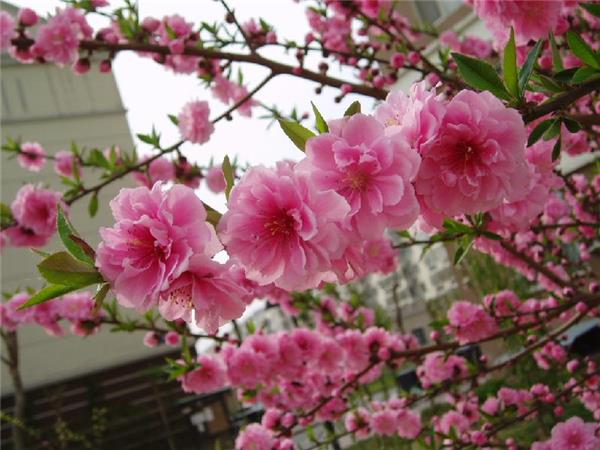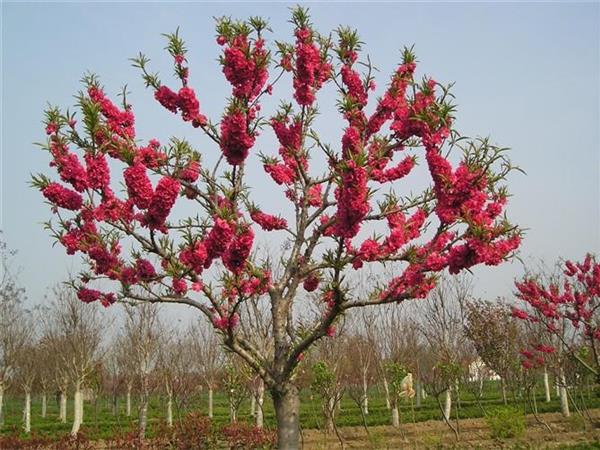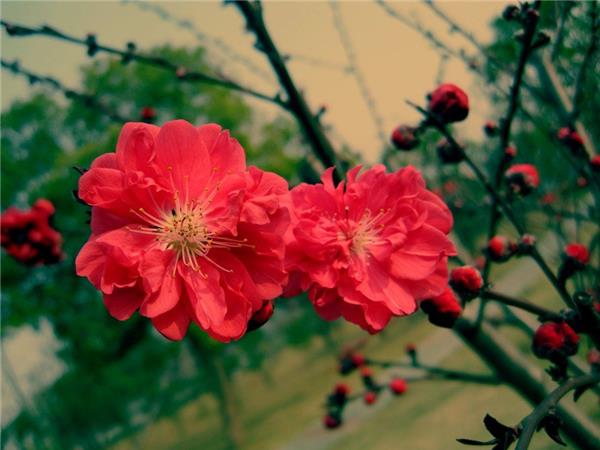Culture method and pruning technique of how to raise Peach
If the florescence of green peach is cultivated properly, it can be manipulated manually. Let's learn more about it.

The culture method of green peach
Seedling propagation: mainly by grafting, but also by sowing. Mountain peach or hairy peach is used as rootstock, and the seedlings of apricot, plum, plum and Shouxing peach can also be used as rootstock, but compared with mountain peach and hairy peach as rootstock, it has the disadvantages of lower survival rate and slower growth rate after survival. the advantage is long life and less diseases and insect pests. The grafted plants were moved indoors after winter and then moved out of the outdoor for culture the following year. The management of water and fertilizer should be strengthened during the growth period. With the growth of the plant, the big pot will be changed in the next year, and it will take about 3 years to take shape.
Fertilizer and water management: Bitao is sensitive to fertilizer, and whether to apply fertilizer or not should be decided according to the strength of plant growth during the growing period. If the growth is too prosperous, it is disadvantageous to the formation of flower buds, and there is no need to apply fertilizer; if the growth is weak, organic fertilizer should be applied around the plant before and after defoliation, and diluted human feces and urine or compound fertilizer should be applied once before flowering. Usually pay attention to timely ploughing, weeding, according to the drought situation timely watering. Pay attention to drainage and waterlogging in the rainy season to ensure the healthy growth of plants and the normal differentiation of flower buds. Pour antifreeze water once before frost.

Pest control: the main pests of green peach are aphids and red spiders. when they occur, they can be sprayed with 3000 times of the enemy to kill aphids and 1800 times of dicofol to kill red spiders. But avoid using dimethoate so as not to cause fallen leaves. The diseases include leaf shrinkage and brown rot, which can be sprayed with 1000 times of methyl topiramate wettable powder.
Flowering regulation: in early December, the potted peach was moved into the cold room for cold room treatment, the temperature was about 6 degrees, and then gradually heated, so that the flower bud had a programmed catalytic development. The temperature gradually increased to 16 degrees after 10 days, to 23 degrees after 20 days, and to more than 24 degrees after a few days. However, attention must be paid to the application of water and fertilizer according to the increasing room temperature, the temperature can only increase gradually, must not increase only, otherwise there will be bud drop or early opening phenomenon, or even die and other adverse consequences. Through this method of increasing room temperature, the green peach can be opened ahead of time during the Spring Festival.

Pruning method of green peach
1. First of all, determine the backbone branches of the tree. Green peach generally has 3-5 main branches, make clear the subordinate relationship between each main branch and all levels of lateral branches, find the branches of each main branch, balance the growth potential of each main branch according to the growth potential of each main branch, mainly cut short, and balance each other by suppressing the strong and helping the weak. When the main branch extends too long, it is necessary to retract in time, choose a suitable branch instead of the original branch to cut short, the main branch must be higher than the other branches, and stay longer.
two。 Secondly, remove useless branches. It is necessary to remove cross branches, overlapping branches, diseased branches, disabled branches, thin and weak branches and unnecessary overgrown branches. Then the pruning group. If we only pay attention to the arrangement of backbone branches and do not pay attention to the culture of flowering branches during pruning, the flowering position will move up, the internal branches will die, and the flowering will be planarized. The flowering branch group can be divided into large, medium and small according to its branching grade. The big branch group is generally above the fourth grade branch, equipped in the middle and lower part of the crown and the dorsal and oblique side of the main branch.
3. Finally, prune the flower branches. Most of the long flower branches remain, and the moderately developed long branches are the best to blossom. 8-12 flower buds should be kept short, 5-6 buds in the middle flower branches, 3-4 buds in the short flower branches, leaf buds in the clipped buds, and not short in the bouquet branches.

Pruning is a very important part of any plant, and green peach is no exception. Only reasonable and correct pruning and shaping of blue peach can better enhance its ornamental value and make it beautiful and fruitful.
- Prev

Grafting Technology and maintenance Management of Ligustrum lucidum
Grafting Technology and maintenance Management of Ligustrum lucidum
- Next

Planting management techniques of Magnolia and what are the varieties of the same family?
Planting management techniques of Magnolia and what are the varieties of the same family?
Related
- Wuhan Hospital Iron Tree Blooming Result Was Instantly Frightened by the Gardener Master
- Which variety of camellia is the most fragrant and best? Which one do you like best?
- What is the small blue coat, the breeding methods and matters needing attention of the succulent plant
- Dormancy time and maintenance management of succulent plants during dormancy
- Minas succulent how to raise, Minas succulent plant pictures
- What are the varieties of winter succulent plants
- How to raise succulent plants in twelve rolls? let's take a look at some experience of breeding twelve rolls.
- Attention should be paid to water control for succulent plants during dormant period (winter and summer)
- Watering experience of twelve rolls of succulent plants
- Techniques for fertilizing succulent plants. An article will let you know how to fertilize succulent plants.

